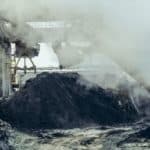Diesel Exhaust – A Complicated Exposure Profile Common in Many Facilities
Insight IH Consulting is very experienced in the assessment of diesel exhaust. We have performed numerous studies using both real-time and conventional sampling methods to compare to applicable exposure limits to determine worker exposure.
Background
Diesel engines provide power to a wide variety of vehicles, heavy equipment, and other machinery used in a large number of industries including mining, transportation, construction, agriculture, maritime, and many types of manufacturing operations. These engines create diesel exhaust fume. Such fume contains a mixture of gases and very small particles that can create a health hazard when not properly controlled.
Occupations with potential exposure to Diesel Exhaust (DE) and Diesel Particulate Matter (DPM) include miners, construction workers, heavy equipment operators, bridge and tunnel workers, railroad workers, oil and gas workers, loading dock workers, truck drivers, material handling operators, farmworkers, long-shoring workers, and auto, truck and bus maintenance garage workers. Furthermore, most heavy-and medium-duty trucks are equipped with diesel engines, as well as equipment used in mines; buses, locomotives and ships; heavy equipment such as bulldozers and tractors; and other types of equipment such as bucket lifts and generators. Miners and other workers in the vicinity of diesel powered equipment may also be exposed to diesel exhaust components.
Short term exposure to high concentrations of diesel exhaust components can cause headache, dizziness, and irritation of the eye, nose and throat severe enough to distract or disable miners and other workers. Prolonged DE/DPM exposure can increase the risk of cardiovascular, cardiopulmonary and respiratory disease and lung cancer.
Additional Information, Links
Diesel Exhaust can contain the following components of interest, per OSHA:
Major Components
Carbon dioxide
Carbon monoxide
Nitrogen dioxide
Nitric oxide
Particulates not otherwise regulated
Sulfur dioxide
Minor Components
Acrolein
Benzene
Formaldehyde
4-Hydroxycoumarin
3′-Hydroxyacetophenone
2-Hydroxy-4-methoxyacetophenone
Menadione
6-Methoxytetralone
6-Methylcoumarin
3-Methyl-2-cyclopentene-2-ol-one
Trimethylbenzene (mixed isomers)
Polynuclear aromatic hydrocarbons (PAHs)
Assessment Methodology
A typical strategy in evaluating a workplace for diesel exhaust exposure is to assess for the following components:
Organic/Elemental Carbon – Sampled using 37mm Quartz Filters (Results compared to reference limit – MSHA Occupational Exposure Limit, and advisory withdrawn ACGIH TLV).
Coal Tar Pitch Volatiles – Sampled using 37mm Glass Fiber Filters (results compared to OSHA PEL, further analyzed for PAHs if detected above limit).
Formaldehyde – Typically collected with passive badges, though glass tube methods are also available.
Carbon Monoxide – Measured using a data logging meter (single gas or multi-gas).
Nitrogen Dioxide – Measured using either a datalogging meter or passive badge.
These samples can either be collected as area samples (if exposures are primarily background in nature) or as personal breathing zone samples.
Insight IH Consulting has extensive experience in industrial hygiene assessments for diesel exhaust components.
Contact us for help with assessing diesel exhaust exposures at your facility today!






